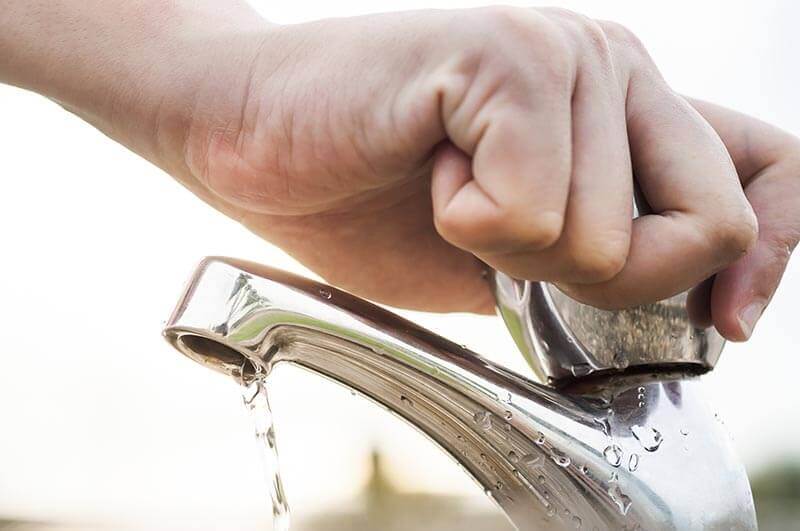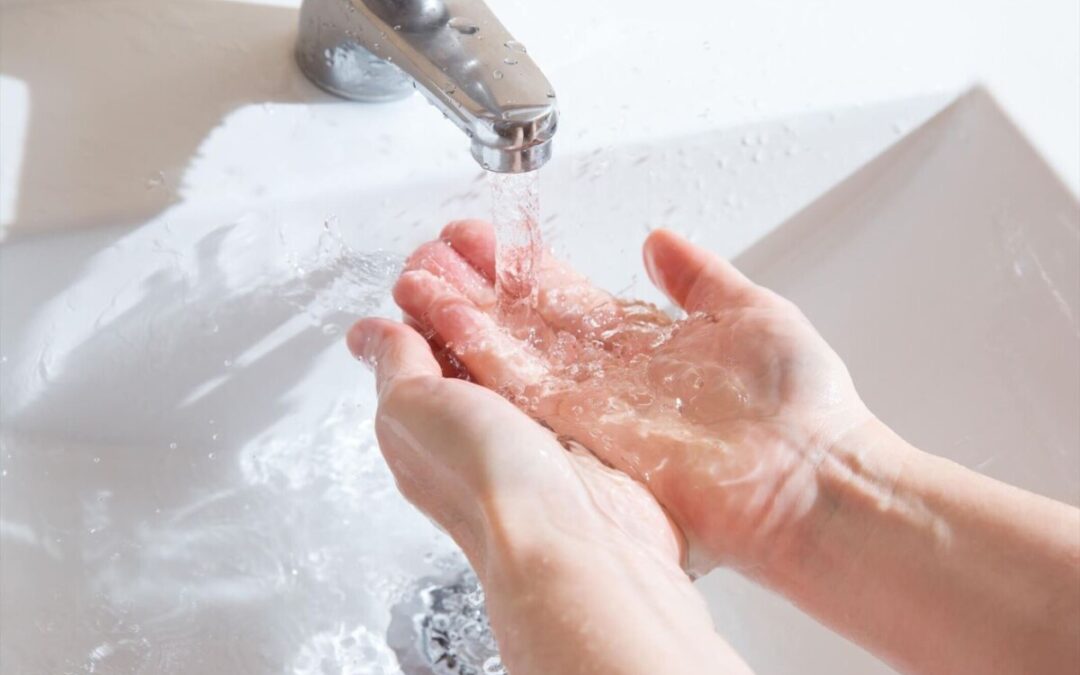
Water scarcity isn’t just someone else’s problem anymore.
Some parts of the world are already seeing the impact of ongoing shortages where there’s not enough water to meet the population’s needs. And our “green and pleasant land” is quietly heading toward the same fate.
One report by the BBC says some parts of the UK could face a drinking water shortage by the 2030s. Surprised? You shouldn’t be. Britain’s climate is transforming. Our summers are becoming increasingly hotter, and winter downpours overwhelm our ability to capture and store the water we need.
According to the National Geographic Society, more than 99 percent of Earth’s water is unusable by humans and many other living things. 3% of this water is fresh water, but only about 1.2 per cent of it can be used as drinking water. The rest is in glaciers, ice caps, and permafrost – or buried deep in the ground.
With all this in mind, fresh water is a finite resource. So we all need to take responsibility for saving water wherever we can.
- Modernise your toilet
- Buy (or make) a cistern displacement device
- Install a high-efficiency showerhead
- Fit taps with flow-controlled aerators
- Plug your bath
- Check your toilet for leaks
- Turn off the taps whilst you brush your teeth
- Turn off the shower mid-use
- Turn off whilst you soap your hands
- Stop that drip
- Reuse your ‘grey water’
Ever wondered just how much water literally goes down the drain in your bathroom? Saving water in the bathroom is easy when you know how.
Read on for our water-saving tips on how to save water in the bathroom.
1. Modernise your toilet
Modern dual-flush toilets use as little as 2.6 litres per flush. And your older toilet might guzzle a shocking 14 litres! That’s quite a difference, so you should consider flush efficiency if you’re updating or redesigning your bathroom or wet room.
2. Buy (or make) a cistern displacement device
Did you know toilets use a third of your daily water? If you don’t have the budget for a new toilet, try this zero-cost hack. Just fill an empty plastic bottle with water and place it in the cistern to save 4 litres with every flush. Or try a toilet cistern water-saving device.
3. Install a high-efficiency showerhead
High-efficiency shower heads use as little as six litres per minute whilst maintaining brilliant cleaning function.
That’s a whopping 20 litres saved during a five-minute shower (compared to a non-efficient showerhead.)
Can’t upgrade your wet room or shower just yet? Keep a bucket nearby to save “grey water” for other household tasks (more on this below!)
4. Fit taps with flow-controlled aerators
These cheap and cheerful tap attachments use less than 800mm of water per minute. That means they can slash water use by 8 litres per minute compared to a non-fitted tap.
5. Plug your bath
Do you run the water until it’s warm before plugging the bathtub? You’re pouring money down the drain!
Adding the plug-in first is an everyday scenario if you have a walk-in bath.
But if you haven’t upgraded your bath yet, always put the plug in first and let the cold water collect at the bottom. After all, you’ll need it to balance the temperature anyway.
Or, if it just takes way too long for your hot water tap to heat up, catch the initial cold water in a bucket or watering can. You can use the excess to water the garden or boil it in the kettle.
Get a FREE Brochure
Simply complete our form to see a full range of bathing solutions & their key features. It takes no time at all!
6. Check your toilet for leaks
Your toilet might be leaking from the cistern into the bowl silently and without you knowing. And that can really waste water.
To find out if your toilet has sprung a leak, add a drop of food colouring to the cistern. If the colour has bled into the bowl within 15 minutes, you probably have a leak that needs attention.
Be sure to use the toilet and flush it soon after so the colouring doesn’t stain.
Carrying out this simple task once a year will help you to identify and resolve leaks early on.
7. Turn off the taps whilst you brush your teeth
This one’s a real no-brainer.
Leaving the tap running while you brush your teeth for two minutes wastes a staggering 12 litres of water.
Instead, just wet your brush, turn off the tap, then rinse your brush when you’ve finished.
The same applies to shaving. Fill the sink with hot water and wash your razor in it, instead of leaving the water to run continuously while you shave.
8. Turn off the shower mid-use
Switching off the water is a bit of a theme here! But turning off the shower while you add shampoo, lather it up, or soap yourself, can save you 680 litres of wasted water each month.
Installing a digital shower in your walk-in shower makes this even easier, as turning a digital shower on and off is highly intuitive.
9. Turn off whilst you soap your hands
We’re all scrubbing our hands for 20 seconds now, but if you’re still leaving the tap running, that can lead to wasted water.
Instead, wet your hands, turn off the taps, soap your hands thoroughly, then rinse.
10. Stop that drip
Leaky taps are annoying, but they’re surprisingly easy to get used to. However, just one drip every second could mean 22 litres of water waste in a day. So, call a plumber in to fix leaky taps as soon as you notice them.
11. Reuse your ‘grey water’
Water that’s been used in the bath, shower, or washing machine is known as “grey water,” as it contains dirt and any cleaning products you’ve used.
Consider collecting this “grey water,” in a bucket and reusing it. Obviously, you can’t drink your bathwater, but you can use it for cleaning your home, flushing the toilet, or watering your garden.
Just bear in mind that some soils (like clay-rich ones) won’t benefit from the regular addition of soap contaminants. But during a drought, it’s a great idea.
FAQs:
How much water does a toilet flush use?
It depends on the age and type of toilet.
Modern dual-flush toilets use 4-6 litres for a full flush, and 2-4 litres for a reduced flush. Older toilets (installed before 2001) often use up to 13 litres per flush.
How many litres of water for a 10-minute shower?
It depends on the type of shower head.
A standard shower head typically uses between 12-15 litres per minute. So a 10-minute shower would use between 120 and 150 litres of water.
A power shower can use up to 17-20 litres per minute, which is around 170-200 litres for a 10-minute shower.
Water-efficient or low-flow showerheads use between 7-8 litres per minute, which is around 70 to 80 litres for a 10-minute shower. If you shower every day, installing a low-flow showerhead could make a big difference to your water usage!
How much water should a 2-person household use?
According to Southern Water, the typical water consumption for a two-person household in the UK is around 274 litres per day, or 100,010 litres per year.
This includes water usage for showering and bathing, toilet flushing, washing clothes, dish washing, drinking, cooking, and watering the garden.
How much water does a washing machine use?
The amount of water a washing machine uses varies by model, energy efficiency rating, and cycle type. Modern washing machines use between 45-50 litres per wash for an average cycle. For an eco cycle, this reduces to 30-40 litres per wash.
If you have an older washing machine, these can use up to 100 litres per wash.
Most newer washing machines (with an energy efficiency rating of A+++) typically use between 40-60 litres per full cycle.
How much water is wasted?
8 in 10 Brits are guilty of committing at least one water-wasting habit. Unless we all act together to reduce water wastage and over-usage, we won’t have enough water to meet our needs in a few decades’ time.
The question isn’t if water shortages will reach our shores, but when. That’s why it’s important to start thinking about how to save water at home.
Some changes to routine are pretty obvious once we know about them.
For example, did you know that a garden sprinkler uses more than 1,000 litres of water an hour? That’s more than a family of four uses on average per day. And it’s not even an efficient system – most of the water just disappears into the air.
Pre-rinsing dishes is another water-wastage culprit. Today’s dishwashers are fully equipped to clean a dirty plate properly (as long as any leftover food has been scraped off.)
Water isn’t a renewable resource. We can’t make more of it to fit a growing population. That’s why you need to be conscious about your water usage and learn how to save water at home!
We hope you find these water-saving tips useful. Remember, making a few small changes can lead to big results – both in terms of economic savings and environmental ones!






